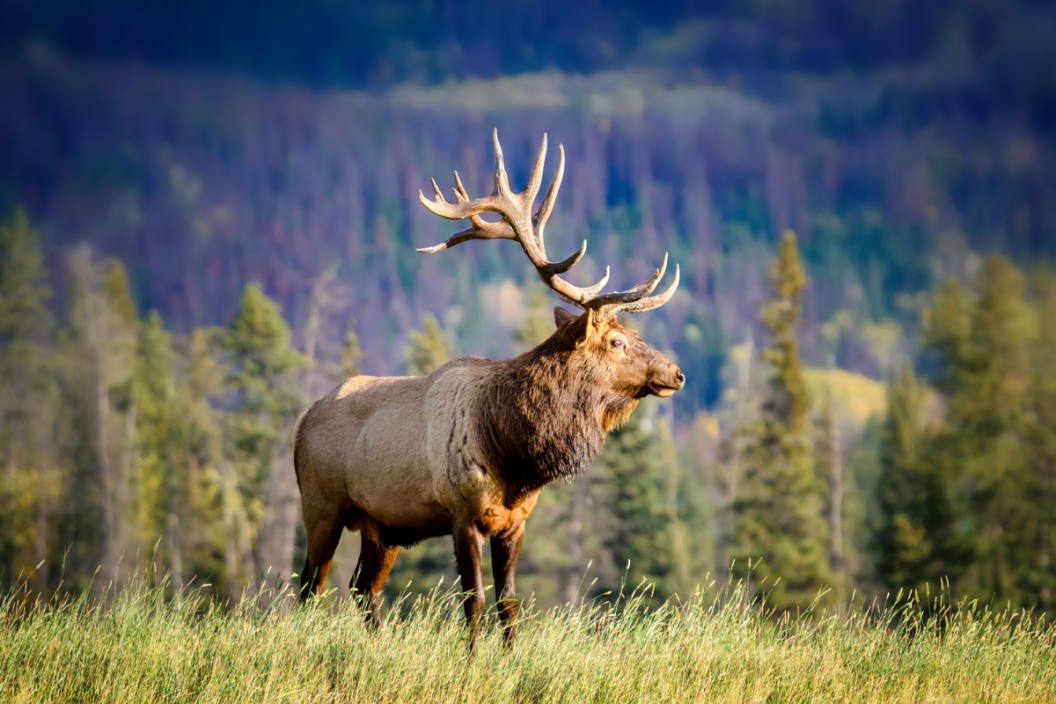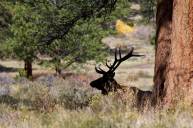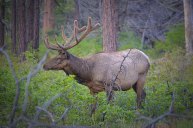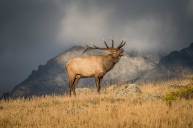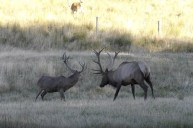For most hunters, spotting and stalking elk is considered the pinnacle of big game hunting in the United States. With animals typically hanging out in steep mountainous terrain, elk hunting demands a different level of physical fitness when compared to sitting in a treestand waiting for whitetails. That said, it's still far more accessible to the average outdoorsman than sheep hunting.
The rush of hearing a mature bull bugle just yards away is tough to beat, but some hunters underestimate the sheer size of these creatures—and the amount of taxing legwork it takes to get a tagged elk out of the backcountry. While hunting an elk should be on your bucket list, you'll need to make sure you're prepared to handle the animal. When it comes down to elk size, just how big can these mammals get?
North American Elk Subspecies and Their Sizes
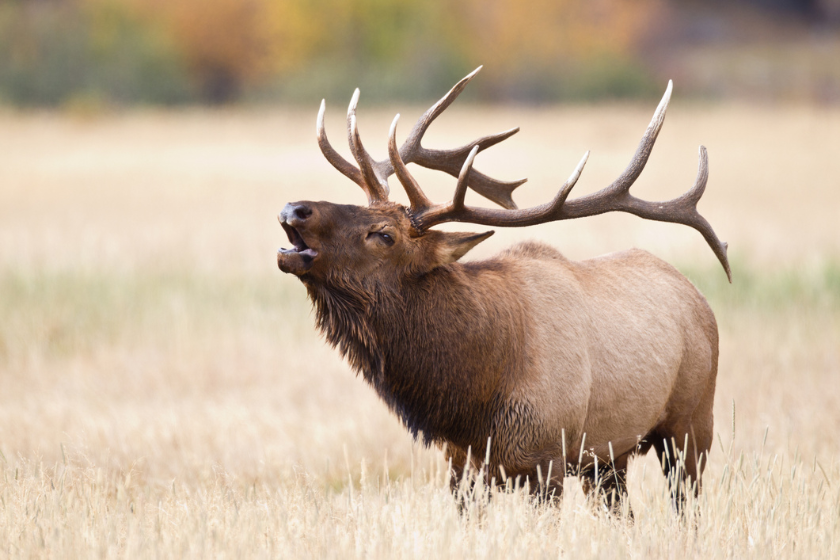
Getty Images Photographer, rpbirdman
Elk are found in North America, Central Asia, and parts of southern Siberia. They were once found across most of North America; however, their population has shrunk significantly due to hunting and habitat loss. Today, approximately 1 million elk roam throughout the western United States and Canada.
According to most biologists, the North American elk can be split into six different subspecies: the Roosevelt elk, the Manitoba elk, the Rocky Mountain elk, and the Tule elk, as well as two extinct species, the Merriam's elk and the Eastern elk. The other species can be found mostly in the mountainous landscapes of North America and range in body size, rack size, and population size. As with any animal, food availability and a variety of other factors can influence overall size and weight, but you can still bank on some averages.
The Roosevelt elk—found in northern California, Oregon, Washington, and British Columbia (as well as an introduced population in Alaska)—has the largest elk size of the subspecies. Mature bulls can weigh up to 1,200 pounds and stand 5½ feet at the shoulder, while cows weigh closer to 600 pounds. They are considered one of the more difficult subspecies to hunt because of their dense, timbered habitat, and can be hunted in California and Oregon.
Manitoba elk, found in Manitoba and Saskatchewan, are the second largest, though they have comparatively small antlers. Bulls can weigh up to 1,000 pounds. They were driven close to extinction in the 1900s, but the population has recovered enough to sustain a limited hunting season.
Next in size is the Rocky Mountain elk, found in the Rocky Mountains from New Mexico into Canada. With bulls weighing 800 pounds, they are slightly smaller in body size than Manitoba elk, but they are more highly prized by hunters for their massive antlers. Bulls grow and shed their antlers every year, and a pair of elk antlers can weigh up to 40 pounds on a mature bull elk, with a 4-foot spread.
Last are the Tule elk, found only in California. They are the smallest of the subspecies in North America. With bulls weighing just 500 pounds, they are less than half the size of Roosevelt elk. Despite offering less meat, the Tule elk is still a worthwhile hunting objective.
Handling Elk Meat
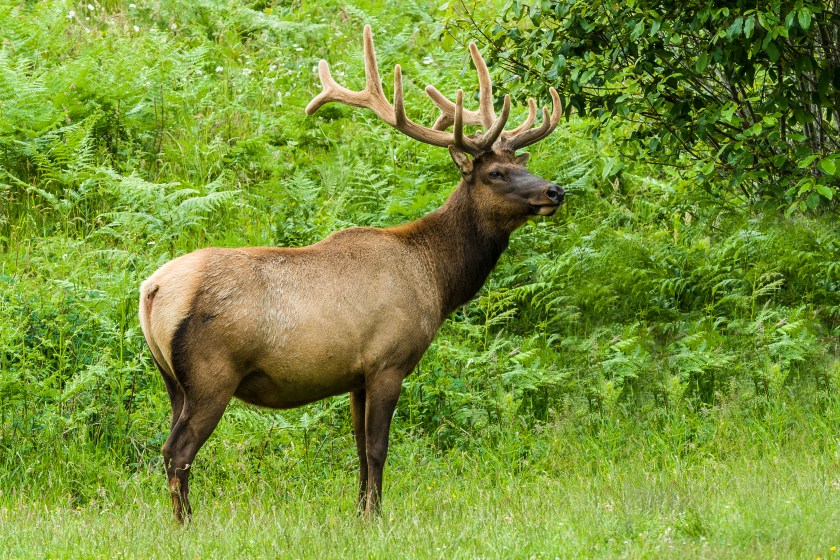
Getty Images Photographer, Gerald Corsi
When translating the stats to meat, elk cows yield an average of 169 pounds and bulls about 218 pounds, according to a study from the University of Wyoming (using Roosevelt elk as a reference). Of course, total yield can vary widely based on location and subspecies.
While hunters can typically take deer from the field whole, you'll have a hard time dragging or packing an elk out without breaking it down first. The field-dressed weight of an elk is typically 70 percent of the live weight, and elk are typically found higher in the mountains—so you're still looking at hauling hundreds of pounds of animal for miles unless you quarter it first.
You can study and execute the gutless field dressing method to simplify and speed up the process. Make sure you have a sharp knife, plus either replacement blades or a sharpener, game bags, and a high-quality pack designed for hauling meat. Frame packs are great for an animal this size, as you can simply secure a quarter or any other portion of the elk to your backpack and begin the trek out.
It's important to properly care for the meat and be prepared with all the right equipment—a couple of buddies to help you make a few round trips on the pack out is always ideal. It's also critical to cool down meat as soon as possible to preserve quality and prevent spoilage. Whether you're taking your elk to a butcher or plan to process it yourself, always prioritize proper game meat safety.
A good elk backstrap recipe will give you some of the best steaks you'll ever sink your teeth into, but the tenderloins and hindquarters offer some incredible cuts as well. You can also get a few great roasts, brisket ripe for BBQing, and plenty of other meat that's great for grounding into burgers or sausage from an elk.
Everything to Know About Elk Size
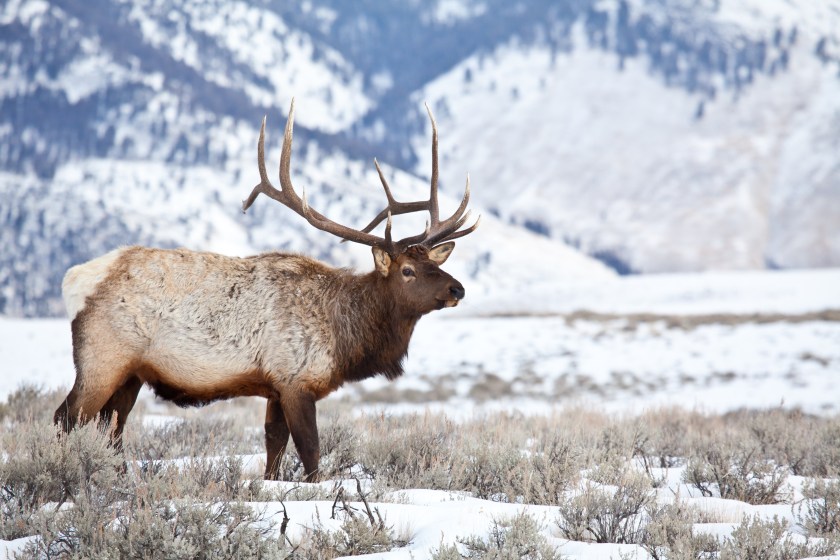
Getty Images Photographer, rpbirdman
Elk vs. Moose Size
While elk rank up there in terms of size when it comes to deer species, nothing can top a moose. They are the largest deer species and in competition to be the largest land animal in North America. Alaskan moose can weigh up to 1,650 pounds, with bodies up to 10 feet long and standing 6 to 7 feet at the shoulder. This far outweighs elk, which even at their largest hover around 1,200 pounds and stand 5?...? feet at the shoulder. Moose also have larger antlers, with some racks being more than 6 feet long.
Elk vs. Caribou Size
Elk are taller and weigh more than adult caribou. Caribou typically only weigh around 400 pounds and stand just under 4 feet at the shoulder and less than 7 feet in length. While this may be bigger than some Tule elk, Roosevelt elk, by comparison, weigh up to 1,200 pounds and stand 5½ feet in length.
What Size Caliber and Cartridge Should You Use to Hunt Elk?
Caliber size, like many things in hunting, comes down to a lot of different variables and personal preferences. General consensus seems to be that you'll want something close to a 7mm or a .338 to take down a bigger bull.
